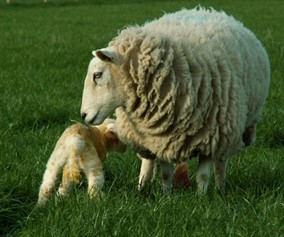Lamb survival
An EBV for Lamb Survival
Signet and EGENES (SRUC) are now producing an EBV for postnatal lamb survival to help breeders genetically improve young animal resilience and identify families with poor survival rates.
The ability to enhance this trait could have a huge impact on animal welfare and flock profitability, especially in the current economic climate where every lamb counts.
While it is recognised that the environment has a huge impact on the survivability of a ewe’s offspring, lamb survival in UK datasets has been shown to have a heritability of 13-14% meaning that genetic progress be made in this trait and an EBV for lamb survival will help the British sheep industry.
The approach used by SRUC scientists was to look at the data and determine whether the lamb has survived based on the availability or otherwise of any measurements taken later in life – with the weights recorded at 8 weeks of age or scanning time being important indicators of survival. Lambs recorded with Signet that are never measured again after birth are deemed not to have survived.
The analysis requires variability to exist in individual flock contemporary groups to produce EBVs – so flocks with less than 5% mortality or more than 50% mortality will be excluded from the analysis.
If breeders routinely, accurately record dead lambs they will have the power to select for those genes influencing lamb survival and improve the profitability of commercial sheep production.
What do I need to do?
The lamb survival EBV is now available to all Signet clients. Breeders need to ensure they provide
- Notification of all lambs born – live and dead lambs
- Genetic identification of dam and sire for all live and dead lambs
- Provide accurate dates of birth
- Weigh all live lambs at 8 weeks of age
For more information read this poster written by Ann McLaren and Joanne Conington, SRUC and a genetic report can be accessed here.
